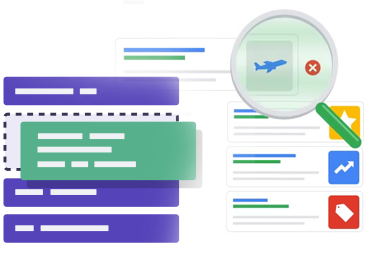
Creating & Shaping Effective Paragraphs
The worst enemy to creativity is self doubt.
– Sylvia Plath
Introduction
Now that we’ve got the basics of words and sentences down, let’s move on to creating paragraphs and linking them together. We’ll also look at some ways to check your writing for clarity and readability.
As you develop your research material and outline notes into sentences, you will also begin to package those sentences into larger units called paragraphs. Paragraphs adhere to a standard, familiar structure that enables readers to easily follow their content and locate key information at a glance. As you develop your research material and outline notes into sentences, you will also begin to package those sentences into larger units called paragraphs. If a sentence conveys an entire thought, then a paragraph conveys an idea by presenting a topic that is comprised of several thoughts that are grouped together in a logical manner and presented in an organized sequence. (Since paragraphs, on their own, can be assembled to produce larger units of meaning such as sections in a report, or chapters in a book, thus paragraphs represent an intermediate level of organization in larger works.) Organizing your thoughts into paragraphs helps you make them clearer to yourself as well as to the person who is reading what you have written, regardless of the length of the message you are communicating or the number of paragraphs it contains.
Creating Paragraphs
A basic paragraph is simply a collection of sentences. A good paragraph, however, is much more than that.
- It has a beginning, middle, and an end.
- It focuses on one theme or idea.
- It ties to the paragraphs before and after it to help build to a logical conclusion.

Typically, paragraphs are structured like this:
- The beginning should state the key theme in one sentence.
- The middle should provide support for the key theme in three to five sentences.
- The end should summarize the key theme in one sentence. It can also provide solutions, give answers, or transition to the next paragraph.
The length guidelines that we have provided here are just that – guidelines. To keep the reader’s interest, you should vary the length of your sentences and your paragraphs.
Brief check
A well-organized paragraph will adhere to the conventional message structure, which is broken down into three parts. These three components are referred to as in a paragraph as the: Topic sentence, Body or development sentences and a Statement that acts either as a transition or a conclusion.
The bare minimum for a paragraph is three sentences, but ideally there should be between four and five so that the development sentences in the body can investigate the subject in greater depth. If a general rule of thumb on sentence length is that sentences should range in size but average about 25 words in length, then a normal paragraph should be approximately ten lines on the page when the font is 12 points and the margins are one inch when it is written in a document with 1 inch spacing between the lines. However, just like sentences, paragraphs should vary in length depending on the requirements and capabilities of the audience, as well as the subject matter that is being discussed. An audience with more advanced literacy skills is able to understand longer paragraphs, which would be lost on an audience reading at a more basic level. This brings us back to our earlier ideas about adapting the message to the audience profile. Some subjects need for more sentences devoted to their growth than others do, and they do not readily lend themselves to being split along the middle; yet, a paragraph consisting of ten or more sentences is truly pushing it. In professional writing, you should never use paragraphs that are more than one page long and have a “wall-of-text” format. To ensure that readers of any level can quickly locate the information they require, however, every paragraph, regardless of length, should adhere to the standard structure that is outlined in the following paragraphs.

THE TOPIC SENTENCE
The topic sentence presents the primary argument or thesis of the paragraph. It also serves to summarize the group of sentences that immediately follow it, allowing the reader to gain an understanding of the whole before delving into its component pieces. This primacy impact in our psychology, whereby initial impressions are the strongest and most memorable, is catered to by this direct-approach organization.
In this effect, we see that first impressions are catered to. Therefore, the reader ought to be able to see how each sentence in any well-organized paragraph expands on anything that was expressed in the topic sentence. If you take a look at this particular paragraph, for instance, you will notice how the second sentence elaborates on the point made in the topic sentence with regard to making accommodations for the reader. This idea is developed further in the third sentence, which elaborates on the component of the topic sentence that discusses how topic sentences synthesize all of the paragraph components as a whole. The phrases that follow, including this one, provide examples to illustrate how the aforementioned system functions. The topic that was introduced in the first sentence is brought to a close in the last sentence, which also serves as a transition to the subsequent topic sentence, which in this instance discusses how to formulate a topic sentence.
Writing a topic sentence generally involves the author looking for one while writing the rest of the paragraph first, and then coming upon it while working on a concluding summary exercise. This is the case for many writers. At the beginning of the writing process, when you are just putting down ideas in the drafting stage of the writing process, you may not yet know what your point is with the paragraph that you are writing. You have probably developed a general understanding of your issue as well as a few topics to discuss, most likely based on the material you gathered when you were doing research earlier. As you piece together the data and construct sentences based on the many information points, you start to get a sense of where you’re headed with the subject matter, and the thesis statement suddenly becomes clearer as you get closer to the conclusion. If you then say “In conclusion,…” and then summarize what you were driving at in a nutshell and leave it there, however, you will do your reader a disservice since you will leave your topic sentence buried behind the mound of data that should be supporting it. In this particular instance, delete “In conclusion,” highlight the final sentence, copy and cut it (ctrl. + c, ctrl. + x), then paste it (ctrl. + v) at the top of the paragraph so that it does what a subject paragraph should do: it summarizes the main point of the paragraph. A quick synopsis is provided here as a preview of what is to come.
BODY OR DEVELOPMENT SENTENCES
The development sentences follow the topic phrase with a series of complete thoughts that elaborate on each component aspect of the topic sentence. This sequence of sentences investigates the subject by adhering to an organizational principle and providing extensive explanations, supporting evidence, instructive examples, rhetorical counterpoints, and so on. The organizing concept may be chosen from any of the following any of the organising principles including chronology or comparison and contrast, among others.

Each sentence in the logical sequence connects to the others around it through the use of pronouns that employ effective repetition (referring to nearby points without repeating them word for word) and transitional expressions, to move the topic exploration forward. Together, these elements serve to advance the investigation of the topic. For example, in the paragraph that can be found above labeled “Topic Sentence,” the pronoun “this” in the first development phrase (which is also the second sentence in the paragraph) symbolizes the topic sentence position that was referred to in the topic sentence that came before it. In the sentence that came before this one, the phrase “for instance” serves as a transitional phrase to convey an instructive example that is supplied as supporting evidence of the topic sentence thesis on the way towards the sentence that serves as a transitional or finishing sentence.
Creating Strong Transitionsand Building Conclusions
Creating smooth transitions between paragraphs can be a tough task, but it will make your proposal much more effective and much easier to read. It will also help the reader draw a logical path between your points, to your conclusion.
To transition a paragraph, find a common theme between the first paragraph and the second. Then, use that theme as the paragraph’s opening sentence. To cement things together, start your sentence with a transitional word or phrase. Some examples:
- However
- Also
- Likewise
- Consequently
- Previously
- On the other hand
- In conclusion
- To illustrate
- In contrast
Brief check
Remember, good transitions take time and practice. The payoff will be a stronger proposal and a more convinced reader.
There should be several levels of conclusions in your proposal.
- Mini-conclusion at the end of each paragraph, tying the main points together, and transitioning to the next paragraph (if appropriate).
- Conclusion paragraph at the end of each part of a section (sub-section, sub-sub section, etc.), tying all the paragraphs in that section together.
- Conclusion paragraph at the end of each major section, tying all the sections together.
When writing a conclusion, try asking yourself, “So what?” to help build a strong case. Example:
- In this paragraph, I am saying that the WidgetMaster can improve assembly line consistency by 45%.
- So what?
- Assembly line problems account for 95% of product defects.
- So what?
- The WidgetMaster can help reduce product defects by improving consistency in the assembly line by up to 45%.
Make sure that each conclusion supports your main proposal goal. If it doesn’t, that section may need to be revised or eliminated.
In a well-organized paragraph, the last sentence completes the main point that was stated in the topic sentence, as well as establishing a thematic bridge to the topic sentence of the following paragraph, if there is one. This brings to a close the topic exploration that was conducted throughout the paragraph. In the same way that the paragraph that came before this one did, the final line acts as a bridge by providing a sneak peek at some of the language that will be used in the subsequent topic sentence. Because it would be a waste of the reader’s time to repeat a point that was just read 20 seconds earlier, the concluding sentence should in no way simply paraphrase the topic sentence, as you were probably taught to do in middle school or junior high. This is because the repetition of a point would waste the reader’s time. Instead of being buried at the end of the paragraph, any topic summary should go at the beginning, where it may provide a synopsis of the subject of the paragraph. The topic is rather concluded by the final sentence in the sense that it completes the expansion of topic-sentence points carried by the development sentences, hence not leaving any loose ends that could mislead the reader.
To cater to the recency principle in psychology, concluding sentences should tie up any loose ends in the preceding paragraphs with a witty and memorable turn of phrase. This is especially important in the case of stand-alone paragraphs or the final paragraphs in a document. Remember that “recency” means that final impressions have impact similar to that of first impressions. Because of this, the concluding or transitional sentence is an important one to the overall success of a paragraph because it ensures that the main point brought up in the topic sentence is fully understood. Because each component of a paragraph serves a purpose toward the communication of a larger idea, the concluding or transitional sentence serves as the “glue” that binds together the paragraphs and the documents that they are a part of. This is due to the fact that both of these functions are performed by it.

PARAGRAPH COHERENCE
It is possible to produce coherence in a piece of writing by ensuring that each paragraph develops the topic that was introduced in the first sentence of the paragraph and by using pronouns and transitional expressions to link sentences together while doing so. When a paragraph has grown to the point where it takes up more than about a dozen lines on the page, it should generally be broken up into a couple of different topics. This is because the transitions within the paragraph have taken it into territory that is sufficiently removed from the topic that was introduced in the first sentence. In general, a paragraph will only address one issue, whereas the one that comes after it will focus on a subject that is connected to the previous one but is still unique.
Along the same lines as the organizing concepts we went over before, we have a stockpile of familiar pronouns, transitional expressions, and specific words or phrases that we use to connect ideas in our writing so that readers can readily follow our trains of thought. As long as the antecedents are understandable, we can use pronouns to represent nouns, phrases, and even full sentences that came before (these are referred to as antecedents). This allows us to avoid duplicating the original words word for word.
PRONOUN TYPES AND EXAMPLES
| Pronoun Type | Singular | Plural | Examples in Sentences |
| 1. Personal subject pronouns | 1st person: I 2nd person: you 3rd person: she, he, it |
we you they |
I wrote the script so that wewould be prepared. Would youall prefer if you, Jenny, went first? She said that he could do it first instead. The team members are really quite good at what they do. |
| 2. Personal object pronouns | 1st person: me 2nd person: you 3rd person: her, him, it |
us you them |
The committee awarded the contract to me but the credit goes to all of us. They could give one to you, as well. The committee sent her the news yesterday, sent it to him today, and wished them all good luck. |
| 3. Personal possessive determiners | 1st person: my 2nd person: your 3rd person: her, his, its |
our your their |
My advice is to deposit yourpayment in our account now. Indeed, all your payments are late. Her payment came through, but his didn’t. Theirpayment plan needs updating so that its bad timing doesn’t them in trouble. |
| 4. Personal possessive pronouns | 1st person: mine 2nd person: yours 3rd person: hers, his, its |
ours yours theirs |
Let’s figure out what’s mine and what’s ours. You’ll get yours. The house is hers, the car is his, but the account is theirs. |
| 5. Reflexive and intensive pronouns | 1st person: myself 2nd person: yourself 3rd person: herself, himself, itself Reflexive: when the subject(s) and object(s) are the same person or people. Intensive: when it can be deleted without being ungrammatical. |
ourselves yourselves themselves |
I gave myself a break and you gave yourself an ache when we threw ourselves in the lake. He perjured himself (reflexive) and she won herself a new car (intensive). Love itself was lost (intensive). Do yourselves a favour. They stoppedthemselves from falling. |
| 6. Demonstrative pronouns | close by: this remote: that |
these those |
This deal might take some time. Pass me that report over there. These are the kinds of things you can expect when those people get involved. |
| 7. Relative pronouns | subject: who object: whom restrictive: that non-restrictive: which |
The accountant who does our taxes asked whom he should send the funds to. The account that he set up is a trust fund, which can be accessed in five years. | |
| 8. Interrogative pronouns | personal: who objective: what, which possessive: whose |
Who is going to call? What are they going to say? Which company do they represent? Whose number are they going to use? | |
| 9. Indefinite pronouns | one, everyone, no one, none, someone, somebody, anybody, everybody, nobody, other, another, everything, either | all, most, many, several, some, few, others, both, neither | One of us cannot be wrong. Everybody knows somebody. No one can tell anyone else what to do. Everyone has a right to know everything, but many don’t know that. All or most came today. Anybody can play guitar. Some went on, but none came back. Neither showed up, but either could have called, so both are at fault. Someone sent several calls to the others. Few can say that the other sent another. |
TRANSITIONAL EXPRESSIONS WITHIN AND BETWEEN PARAGRAPHS
| Transition Type | Examples | ||
| 1. Sequence | First, …. Second, …. Third, … Initially, … From the start, |
…Next, … …, then … Later, |
…Ultimately, … Finally, … |
| 2. Addition, repetition | Additionally, … Again, … Also … Not only …, but also … Furthermore, … |
… and … … or … …, as well as … Besides, … Equally important … |
Further … Alternatively, … In addition, … Another … Moreover, … |
| 3. Time | When … / Whenever … Before … Earlier, … Recently, … Meanwhile, … |
While … Now … Currently, … During … Immediately … |
Simultaneously, Subsequently, After … Afterwards, … At last, … |
| 4. Place, position | Above … Below … Near … To the left/right of … |
Opposite … Close to … Adjacent to … Farther on … |
Beyond … In front of … Behind … Throughout … |
| 5. Logic, cause & effect | Therefore, … Thus, … For this reason, … Consequently, … |
Hence … If …, then … Clearly then, … It follows that … |
Accordingly, … As a result, … Because … Since … |
| 6. Similarity, comparison | In the same way, … Just as …, so too … |
Likewise, … Similarly, … |
… also … |
| 7. Example | For example, … For instance, … |
…, specifically … … in particular … |
To illustrate, … In this way, … |
| 8. Opposition, exception, contrast | However, … …, however, … … notwithstanding, … On the one/other hand, … On the contrary, … |
…, but … …, although … Nevertheless, … Nonetheless, … … instead … |
Still, … …, yet … In spite of … In contrast, … |
| 9. Emphasis | Indeed, … In fact, … |
Even … Of course, … |
|
| 10. Paraphrase, summary | In other words, … …—that is, … …—that is to say, … To paraphrase, … |
To summarize, … In conclusion, … In sum, … in a nutshell, … |
In a word, … In brief, … Ultimately, … in the end, … |
Practical Application
Mark had sat down to check over the revised version of his proposal that Edward had given him. Edward asked, “Is there anything about that that continues to haunt you, even after all this time?” Mark acknowledged, “There it is!” And I just realized what was going on now. This is the final paragraph of the section, and it serves as a conclusion. It seems as though when you were writing it, you were just about to run out of steam. Edward freely admitted, “I was.” “In your opinion, what does it require?” Mark shared his philosophy, “Whenever I get stuck at the conclusion, the first thing I do is ask myself a question.” In this instance, it would be something along the lines of “The EasySell can boost line efficiency by up to 55 percent.” But so what? Explain why it could be beneficial. Explain how and why it resolves the issue.” Edward grinned. “That is absolutely perfect. That is exactly what it need.” When
Edward delivered the proposal later on in that month, he was certain that it would pique the interest of his client since he was convinced that it would do so.





